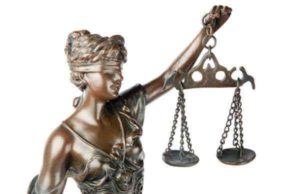
What You Need to Know About Discrimination: Understanding Its Forms and Effects
Introduction
Discrimination is an issue that affects many people around the world, and it can take many different forms. Whether it’s based on race, gender, religion, or other factors, discrimination can have a profound impact on individuals and communities. Here’s what you need to know about discrimination and how to recognize and address it.
What is Discrimination?
Discrimination is the act of treating someone unfairly or differently on the basis of certain characteristics or traits, such as race, gender, religion, age, disability, or nationality. Discrimination can take many different forms, from overt acts of prejudice to more subtle forms of bias or exclusion.
Forms of Discrimination
Some of the most common forms of discrimination include:
– Racism: discrimination on the basis of race or ethnic origin.
– Sexism: discrimination on the basis of gender or sex.
– Ableism: discrimination against individuals with disabilities.
– Homophobia: discrimination against individuals based on their sexual orientation.
– Ageism: discrimination against individuals based on their age.
– Religious discrimination: discrimination based on someone’s religious beliefs.
Effects of Discrimination
Discrimination can have a range of negative effects on individuals, including:
– Mental health consequences, such as anxiety, depression, and stress.
– Physical health consequences, such as chronic illness and increased risk of disease.
– Economic and financial consequences, such as decreased income and reduced job opportunities.
– Social and interpersonal consequences, such as isolation and exclusion from societal structures.
Addressing Discrimination
Addressing discrimination requires a multi-faceted approach that combines education, advocacy, and legal action. Some ways to address discrimination include:
– Educating people about the impact of discrimination and providing training and resources to recognize and address it.
– Advocating for policies and laws that promote equality and prohibit discrimination in all its forms.
– Supporting and empowering individuals and communities who have experienced discrimination.
– Encouraging individuals to speak out against discrimination and take action to promote a more inclusive and equitable society.
Conclusion
Discrimination is a complex issue that affects individuals and communities in many different ways. Recognizing and addressing discrimination requires a concerted effort from all of us, and it begins with educating ourselves and others about the forms and effects of discrimination. By working together to promote equality and challenge discrimination, we can build a more inclusive and just society for everyone.
What is the Definition of Discrimination?
Discrimination is defined as the overarching act of inequity, intolerance, or favoritism with regard to specific characteristics and traits considered to be out of the control of those in possession of them. Discrimination can occur in virtually every social setting in which fundamental differences exist between individuals or groups.Discrimination Laws
Although the Declaration of the United States expressed the famous tract that stated that ‘All men are created equal’, Discrimination of many forms existed then. Many Civil Rights lobbyists argue that Discrimination is currently present in modern society.
With regard to Discrimination, a variety of legislation was instituted in order to combat unlawful bigotry, prejudice, and Discrimination:
(1876) The Jim Crow Laws were instituted following the end of the Civil War. They granted equal rights to all minorities in lieu of their mandated separation from the general Caucasian population.
(1964) The Civil Rights Act of 1964 abolished segregation in the form of the preexisting Jim Crow Laws that had been in effect prior to the turn of the 20th century.
Types of Discrimination
In addition to racism, a variety of additional types of Discrimination exist. However, legislation protecting individuals from these types of Discriminatory acts oftentimes exist in tandem:
Age Discrimination: This is a type of Discrimination in which individuals are treated with illegal and unlawful bias as a result of their age.
Gender Discrimination: Discrimination in which individuals are treated with illegal and unlawful bias as a result of their gender.
Sexual Orientation Discrimination: Discrimination in which individuals are treated with illegal and unlawful bias as a result of their sexual orientation.
Racial Discrimination: Discrimination in which individuals are treated with illegal and unlawful bias as a result of their race. This can also be defined as Racism.























